Proteins: One of the Building Blocks of Life
The word “protein” probably calls to mind images of food: meat, chicken, fish, and dairy. These foods are high in protein, but what exactly is a protein? In biology, there are four different types of macromolecules that are the building blocks for every living thing. These are nucleic acids, carbohydrates, lipids, and – yes – proteins. Each of these macromolecules perform essential functions that the cell needs to survive. Proteins have many roles in the cell and are very important to the needs of life.
Macromolecules is a fancy way of describing a molecule that is made up of a collection of different smaller components, which will be described for proteins later on.
Amino Acids Build Proteins
A protein is a large macromolecule composed of smaller molecules called amino acids. Amino acids connect in a chain, and this chain folds up to form the structure of a protein. In order to fully understand this process, it is important to follow the Central Dogma of Biology. This is a fancy way of describing the method in which all proteins are formed: DNA is transcribed into messenger RNA (mRNA), and then mRNA is translated into proteins. How does this happen? DNA and RNA are both composed of building blocks called nucleic acids. A protein known as RNA polymerase “reads” the nucleic acids of DNA and transcribes them into mRNA. Then another protein called a ribosome “reads” the mRNA and translates it into amino acids. The amino acids are connected by peptide bonds, and then interact with each other to fold and form proteins. A more detailed scientific description for those interested can be found here. Amino acids are found in the food we eat and are made within our bodies, and chains of amino acids are broken down so they can build more proteins.
All of the proteins that your body needs are coded for in your DNA. Every single cell has the same DNA, but based on where that cell is in your body and what it does it will need different proteins. For example, a brain cell wouldn’t need the protein enzymes that your stomach cell would need. The RNA polymerase is responsible for only transcribing sections of DNA that code for a protein that cell type needs. This Central Dogma controls the flow of information in your cells to make sure that it has the necessary equipment (i.e. proteins) to function properly. Next, we will examine how proteins perform different functions.
Large is a relative term. Proteins are “larger” than their individual components, but are actually quite small in terms of other macromolecules. When I first started studying proteins, I didn’t fully understand just how small they are. Here is a picture of a protein interacting with a strand of DNA and a scale of just how proteins relate to other known objects. They are really small!
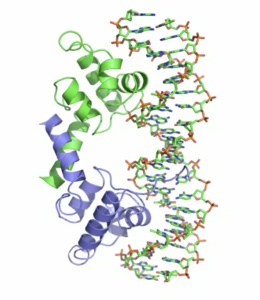
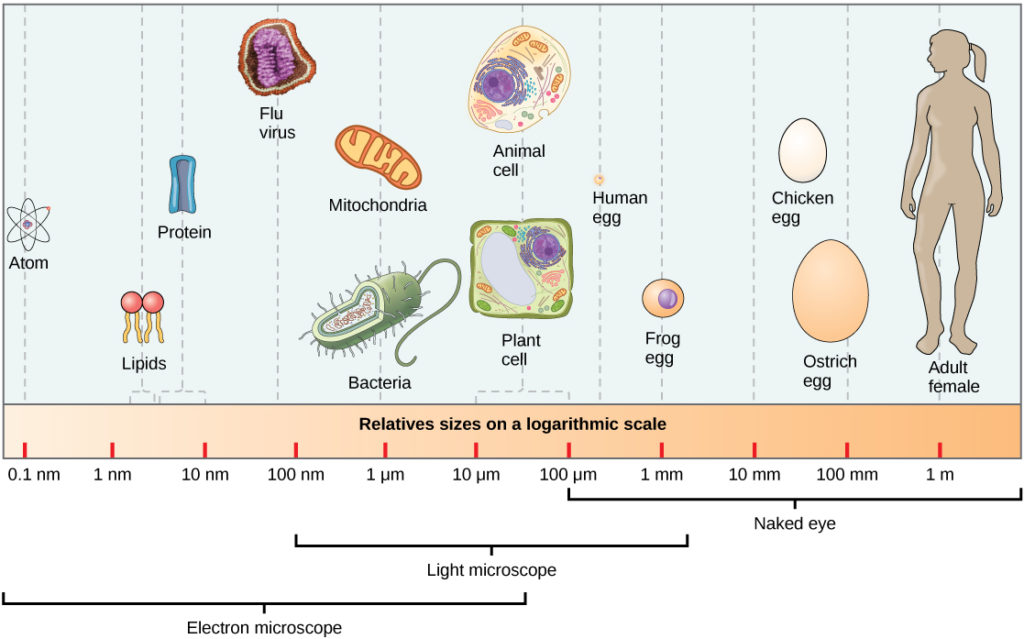
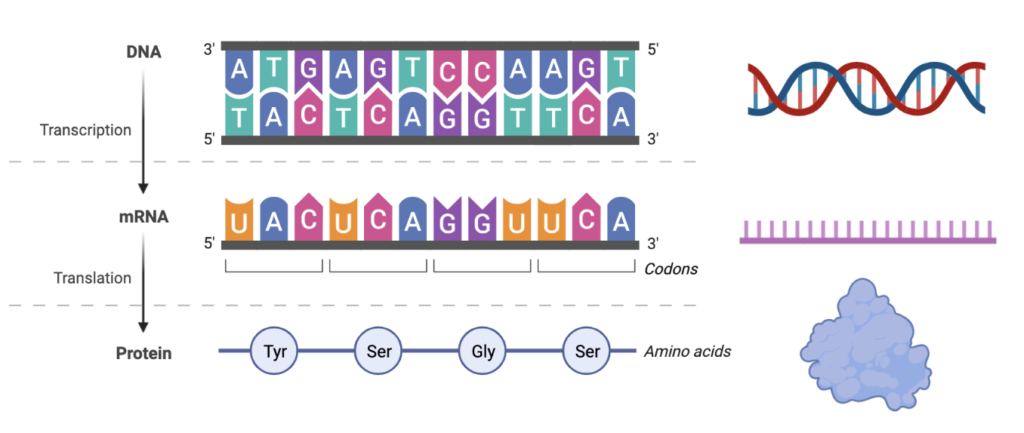
Protein Structure Indicates Function
Proteins perform many different functions in living things. They are enzymes that catalyze reactions (breaking down food in your saliva and stomach), they transport molecules into and out of the cell, they generate cell movement and nerve impulses, they make up the structure of a living thing, they control growth, and they control regulation of the Central Dogma to build more proteins. What is fascinating about proteins is that there are only about 20,000 genes in human DNA that code for proteins, but there are over 500,000 different proteins! This is due to the protein regulation of how RNA is cut up into mRNA in different ways to form the right sequence of amino acids for each protein. A more detailed scientific description for those interested can be found here. Once the right sequence of amino acids has been made, the protein must fold up into the proper structure. This is extremely important to its function: in many cases a protein must interact with DNA or RNA, molecules, or even other proteins to perform its function. Thus, it must have some way of recognizing its target. The structure of a protein is very important to how it recognizes and performs. The structure is driven by one major factor: how the amino acids interact with each other and the surrounding environment. Just like oil and water, some amino acids are hydrophobic like oil, meaning they don’t mix well with water. These amino acids will be sequestered inside a protein while amino acids that are hydrophilic, meaning they do mix well with water, will be on the outside of a protein. A more detailed scientific description for those interested can be found here. How these amino acids fold in or out and how they form bonds with each other make the protein into a shape that fits its function.
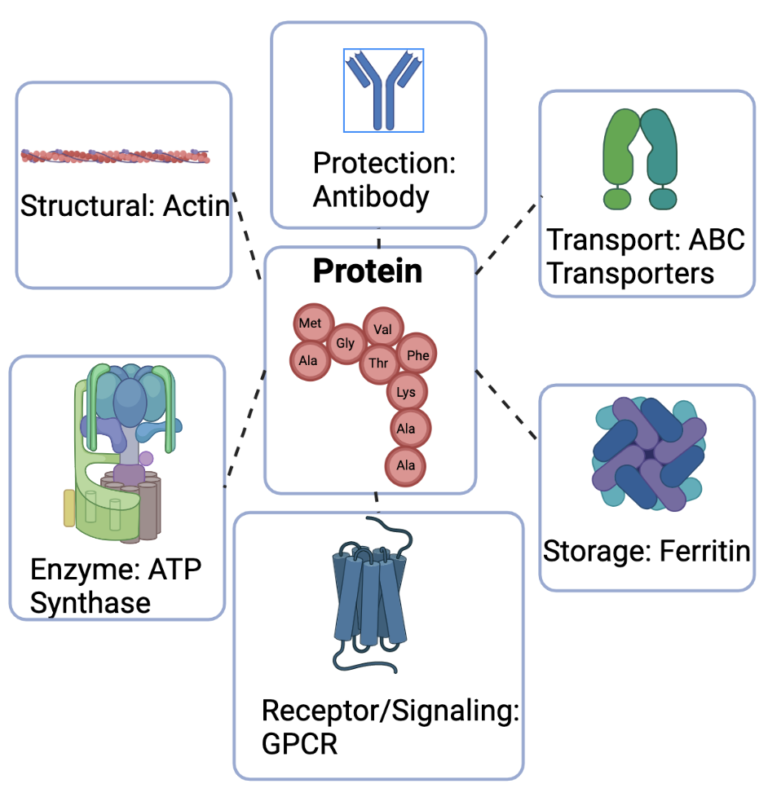
Let’s look at an example. A protein enzyme catalyzes a reaction, meaning that it helps chemicals or molecules to interact in a way that forms a product. Shown here is a molecule known as lactose, made up of two sugars glucose and galactose. The protein lactase recognizes the shape of lactose to interact with it and catalyze the reaction that breaks it into its two components. This is a model of that interaction: the protein and molecule fit together kind of like a key into a lock. More information about the function of lactase proteins can be found here.
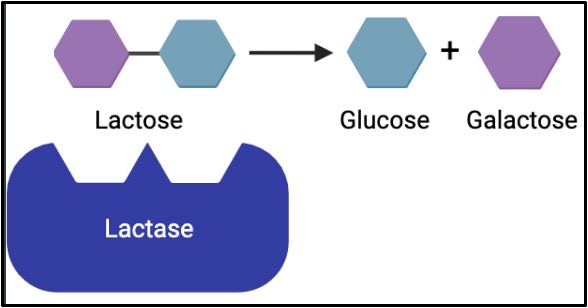
Proteins are chains of amino acids that fold up into a structure that dictates their function. They perform many functions in living things and are essential to many processes. Different proteins are made in different cell types, but all of them are encoded in an organism’s DNA. Details about how individual proteins work can be found in the articles on the All About Proteins page.
